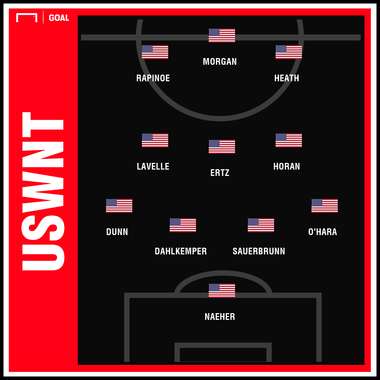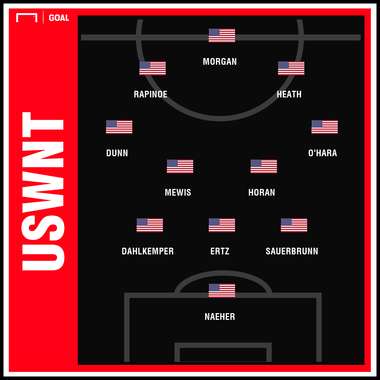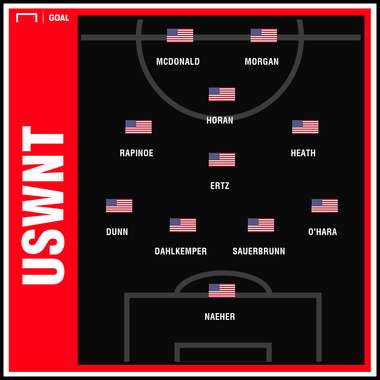After the U.S. women’s national team shockingly failed to medal at the 2016 Olympics, the team went through a period of reconstruction.
Head coach Jill Ellis brought in a host of new faces and tinkered with several different formations as she searched for a winning formula.
Naturally, there were some ups and downs. After a 1-0 defeat to Australia in July 2017, the USWNT had lost three home games already in the calendar year. It was clear a change was needed.
The following game, Ellis lined her team out in a 4-3-3 formation against Brazil. The U.S. won 4-3, and then proceeded to go a year and a half without losing again.
Heading into the 2019 World Cup, it's safe to say the 4-3-3 will be the team's preferred setup, but Ellis has options if she wants to change things around.
Here are four looks we could see from the USWNT.
The first-choice XI

If the World Cup started tomorrow, this is the lineup that Ellis would likely select. The team's 4-3-3 formation allows it to relentlessly attack opponents – though there are still questions about its sturdiness at the back against top-tier opposition.
Ellis prefers her fullbacks to get involved in the attack, meaning Crystal Dunn and Kelley O'Hara are the top options in a back line that features Becky Sauerbrunn and Abby Dahlkemper at center back. With a three-player midfield, much of the team's width comes from Dunn and O'Hara.
Lindsey Horan is the centerpiece of that three-player midfield, with the freedom to roam ahead of holding midfielder Julie Ertz. For now, Rose Lavelle gets the nod as the most attacking member of that midfield trio.
Up top, Alex Morgan is the team's undisputed target forward option, with Megan Rapinoe and Tobin Heath also near-locks to start in the attacking winger positions on either side of Morgan.
Mewis in the midfield

Sam Mewis was indispensable for the USWNT in 2017, but last year saw her influence on the team wane as she started just two matches. This year started out like 2018 for Mewis, but things could be moving more in her favor now.
With Horan out, Mewis played a starring role in the USWNT's final SheBelieves Cup match against Brazil. The 26-year-old's strong two-way play brought more balance to the team's midfield and led to suggestions that she could retain her starting spot even when Horan returns to the fold.
Pairing Horan and Mewis ahead of Ertz in the midfield would add more steel to the side and allow Horan to focus more on attacking than she would with Lavelle ahead of her.
In the team's first-choice lineup above, Lavelle is a pure No.10 and with the full-backs getting forward often, it leaves the USWNT vulnerable to counterattacks. Against some of the top sides in the world, a lineup featuring Mewis instead of Lavelle would make plenty of sense.
Ertz drops to the back line

During the SheBelieves Cup, Ellis experimented with dropping Ertz back from her holding midfield role to a spot between the center backs, giving the U.S. a de-facto 5-2-3 look.
Strangely, Ellis opted for this look at times when Lavelle and Mallory Pugh were alongside Ertz in central midfield. With Lavelle and Pugh alone, the U.S. did not have nearly enough strength and ball retention in the middle of the park.
If, however, Ellis played stronger defensive players like Mewis and Horan in midfield, Ertz's ability to drop deep into possession could be effective against opponents when they press. This setup would still leave Horan and Mewis with an awful lot of work to do in the middle of the field, but they would be much more likely to succeed than Pugh and Lavelle were.
A two-forward look

The USWNT has not gone with a two-forward setup much recently, but Jessica McDonald's emergence as a viable contributor in recent months could change that calculus.
McDonald has served mostly as a backup to Morgan, but the pair have shared the field briefly during last year's friendly against Scotland and January's friendly against Spain.
Having McDonald and Morgan serving as dual forwards would likely be more of a late-game option, but it could be an effective misdirection with opponents planning to face a USWNT side that has used a single-forward setup for some time.
